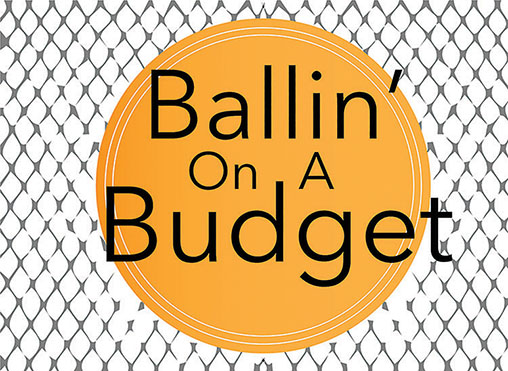Ballin’ on a Budget
Veggies aren’t a luxury
More stories from Natalie Fleming

Photo by Savannah Reeves
Just because all college students aren’t rich or fully established doesn’t mean they relinquish the necessity, or ability, to be health-conscious.
Consistently cooking nutritious, well-balanced meals on a budget is not the most difficult thing in the world. Here are a few tips and tricks for students looking to eat healthier without spoiling their savings.
Meal prep
Having a simple and organized kitchen will save so much money in the long run. Planning out meals, and cooking in larger batches, leaves students with reheatable and delicious leftovers.
The easiest way to avoid cooking three meals a day, every day, is to prepare dishes on the weekend that store easy. Meal preps ideas range from simple salads to lasagnas, casseroles, stews and stir fries.
Cook at home
Anyone who lives in a dorm knows that the Riverview Cafe or Davies Student Center have plenty of healthy options when it comes to meals. However, access to a kitchen provides more mobility when it comes to meal variety and keeping the cost low.
Cooking at home prevents money spent on fast food while providing a healthier and cheaper alternative. Also, cooking and preparing meals is tapping into a creative part of the mind, and everything we like and don’t like can be adjusted.
Don’t shop hungry
Shopping hungry can lead to a lot of impulsive buying based on the food craved while in the store. It’s just asking for trouble.
Stop buying junk food
When students buy junk food they are spending money on something that has no nutritional value. Since junk food is loaded with empty calories, it leads consumers to be hungrier sooner. Purchasing unhealthy snacks, while tempting, does not help in terms of health or savings.
Buy whole foods
This does not only pertain to buying whole grain items but also buying literal whole foods. For example, instead of buying pre-grated cheese, buy the entire block of cheese. It’s less expensive, and it yields more servings per package.
Generic brands
Generic brands retain the same quality that popular brands have, but the product is less expensive.
Stock up and store
Buying storable foods such as rice, oatmeal, canned goods, seeds, nuts and frozen veggies and fruits can save a lot in the long run. When buying in bulk, foods are less expensive. In addition to storable food, airtight containers can hold beans, lentils and dried fruit for a long time. This way food is stored for future use.
Cheaper cuts of meat
Purchasing meat on a budget is always difficult. While money is tight, make the decision to purchase a cheaper cut of meat. For most students, a $15 sirloin just isn’t reasonable. Students should look for ground beef, chuck steak, a whole chicken — instead of just slices that are overpriced — and lamb chops. Incorporate these meats into burritos, soups, casseroles, stews and stir fries.
Replace meat altogether
Whether students are vegetarian, vegan or just plain broke, protein can be found in alternative (and often cheaper) sources. The protein that fresh meat carries is easily replaced by legumes, hemp seeds, eggs or canned fish.
Shop in season
Look for products that are in season to save a little extra cash. Over the summer, plenty of fruits — like berries, mangos and avocados — are abundant and fresh. When fall comes, these fruits can be frozen and stored. They keep really well in airtight packaging, such as Ziploc bags.
The autumn season is best for produce like zucchini, carrots, cauliflower, kale and radishes. Again, these can easily be chopped up and frozen for future use in various dishes.
Even college students are fully capable of keeping their bodies, and bank accounts, healthy.
Fleming can be reached at [email protected].









